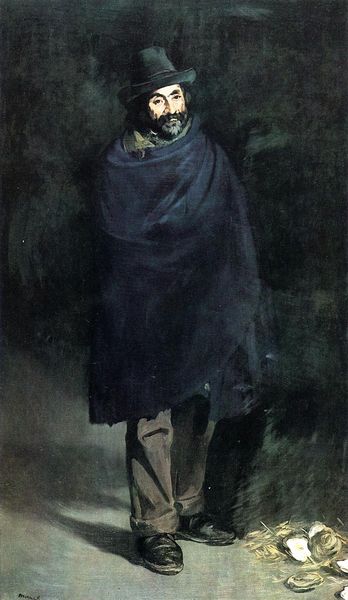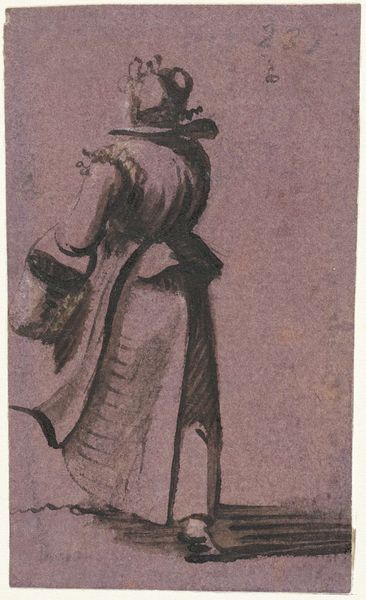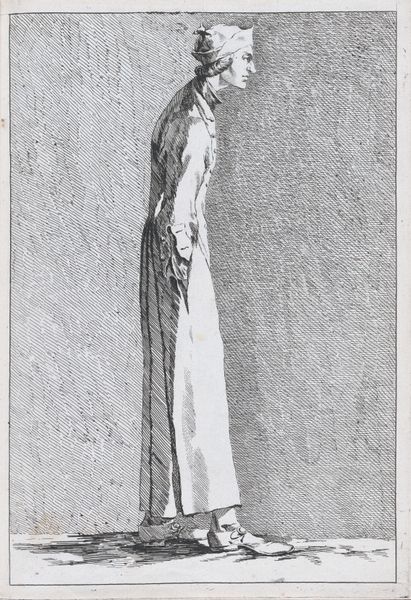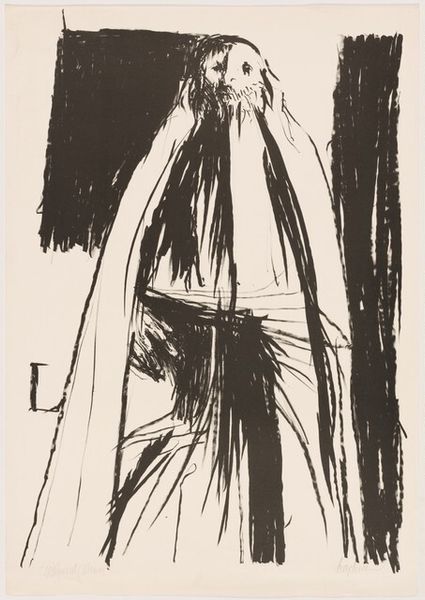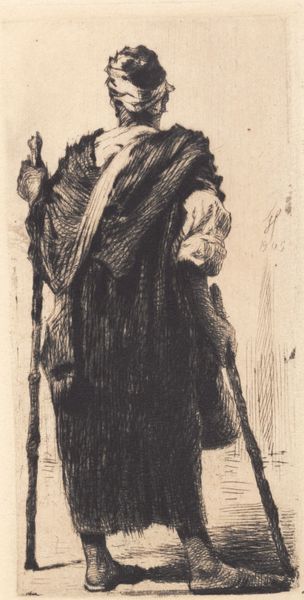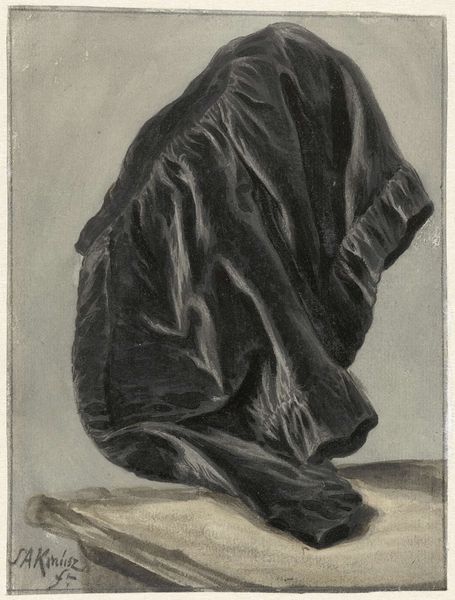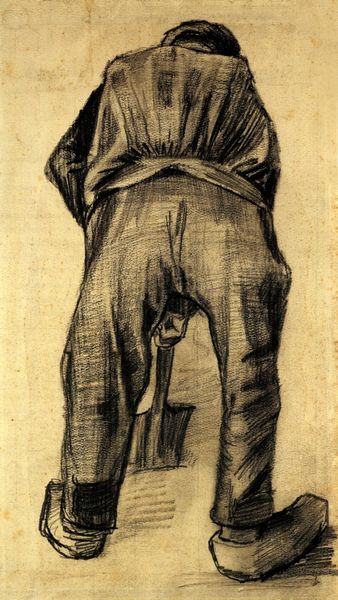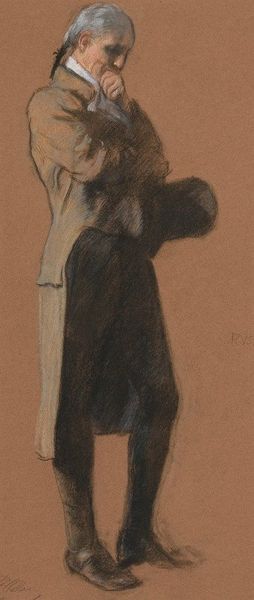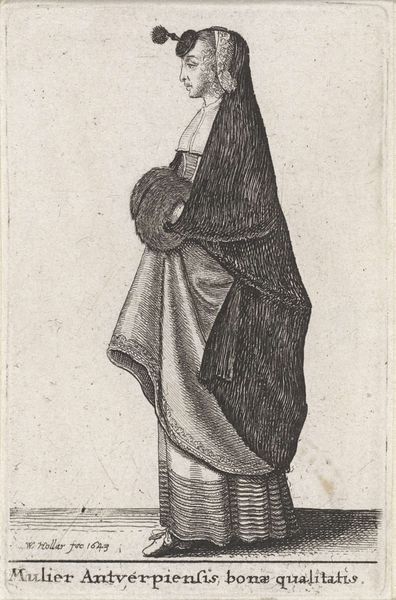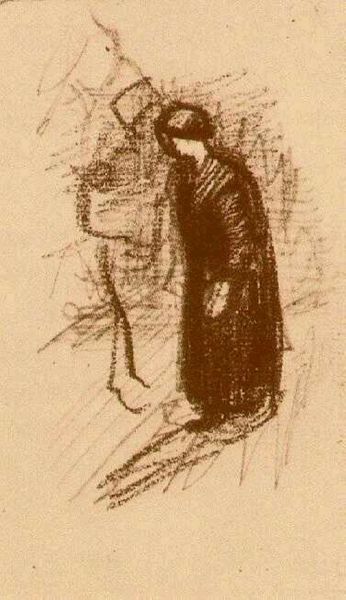
Copyright: Public domain
Vasily Vereshchagin created this painting of a Kazakh woman in the late 19th century, likely in Russia. Vereshchagin was known for his depictions of war and of orientalist scenes from the Russian Empire’s expansion into Central Asia. This work presents the figure of a woman from the nomadic, Turkic-speaking population of Kazakhstan, then under Russian rule. The woman’s traditional headdress immediately marks her cultural identity, but her averted gaze and hunched posture might also suggest the social disruption that came with colonial rule. How does this image reproduce common tropes about the ‘exotic’ cultures of Central Asia? Or is it a sympathetic portrayal of a woman caught in a moment of cultural transition? These questions are not easily resolved, and require us to look at the broader history of Russian expansionism, as well as the artist’s personal history, using resources in archives and libraries. Understanding this history helps us to grasp art’s complex relationship to social change.
Comments
No comments
Be the first to comment and join the conversation on the ultimate creative platform.
